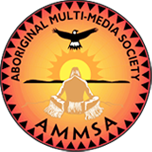Article Origin
Volume
Issue
Year
Four Sacred Stereotypes dominate film images of Indians
Page 7
I don't know about other people but to me, political revelation is often inspired by the strangest places. It was another lonely Friday night, the kind I've been seeing much too regularly. And in those wee hours of the morning I found myself sitting on my couch in front of the television set, munching from a bowl of popcorn lightly seasoned with low-fat margarine, when an image I remembered from my childhood flashed across the screen.
There, sandwiched between telephone sex commercials and offers for self-improvement videos and cassettes (interesting combination), stood Tom Laughlin, the famous Billy Jack to the common folk, the hero of my childhood.
You have to understand that in the early 1970s there were precious few cinematic people for impressionable young Native kids to relate to. It was either him or Jesse Jim of The Beachcombers.
So there he was at the climax of the film, an Indian barricaded with his rifle, surrounded by multitudes of cops wanting to shoot him full of sizable holes, yet holding them off with superior skill and moral fibre. I understand they used to screen this movie every night at Oka.
His girlfriend enters and notices he has been shot. Stoic, as all us Indians are in the movies, he ignores his bleeding side, saying melodramatically, "An Indian isn't afraid to die."
As I sat there munching on my popcorn, I thought, "Obviously we don't know the same Indians."
That's not to say, of course, that Native people are cowards or aren't willing to stand up for what they believe. As a Native myself, I know how quickly the Aboriginal people of this country are willing to take a stand no matter what the consequences.
What I am referring to here is the stereotypical impression that characters like Billy Jack give to the world. Like we all appear mystically in the nick of time on our motorcycle/horse/jeep, strutting around in our black T-shirts and black hats, karate-kicking white people on the side of the head. Well...maybe a few, but generally you don't see much of this on your average reserve.
As a Native person living in today's world, I am only too aware of the false impression held by a lot of people about our Aboriginal society. And I have yet to find one of these stereotypes that I fit into properly. Maybe my white blood throws the bell curve off or something - I don't know. But I do know that dying isn't on my list of favorite things to do in the near future. Hopefully.
I've noticed four specific categories that the majority of Native people are lumped into by the media. And because four is a special number in Native beliefs (the Four Directions, for example), I like to call these the Four Sacred Stereotypes.
The first consists of the ever-popular side-kick. It seems it was impossible to get anything done without your trustworthy Indian companion, such as the Lone Ranger's Tonto, Nick's Jesse Jim, and Hawkeye's last two Mohicans - they kept hanging around with a white guy instead of with women.
The second is the fiery young Aboriginal radical, dedicated to saving his people whether they like it or not. Give him a soap box, a court room or a barricade and his spirit cries out...well, you get the picture. Again, Billy Jack kicks into action (literally).
Third is my personal favorite: the borderline psychotic, often drunk, out-of-control Indian who, given a chance, wouldn't hesitate to separate your spirit from his reality quicker than you could dodge a bullet. Witness Arthur from A Dream Like Mine/Clear Cut, Injun Joe from Tom Sawyer or the Indian from Predator or 48 Hours.
I like to call these people IWABA (Indians With A Bad Attitude).
Finally, we have the fourth stereotype: the mystical, all-knowing Indian with one foot on the astral plane, the other in a canoe. You know the type. They melt in and out of the bush almost as effortlessly as they speak metaphorical wisdoms in poor English - about humanity and the world - witout cracking a smile. You couldn't swing a dead cat without hitting that sort of Indian on shows like Little House on the Prairie or Grizzly Adams.
Or if the writer/director is feeling particularly adventurous, how about a psychotic radical Elder sidekick?
But as I said, none of these descriptions really fit me. My best friend is Native, so that sort of eliminates the sidekick syndrome. Perhaps we're two Indians in search of a white man? Now there's a scary thought.
I'm fairly certain I'm not the fiery radical type. While it is true that being born Native in this country is a political act in itself, that's about the extent of it for me. I find radicals don't get paid nearly enough.
And as for the psychotic, angry drunk, being a writer is about as psychotic and angry as I can handle. As for my being out of control...talk to my mother.
I sometimes wonder if there's a heaven for outdated stereotypes, a place they all hang out when no longer in vogue. somewhere out there is a card table with Tonto, Billy Jack, Uncle Remus,. Shylock and the rest, playing cards to pass the time. I wonder
if Billy's still wearing that black T-shirt and hat.
- 2513 views
